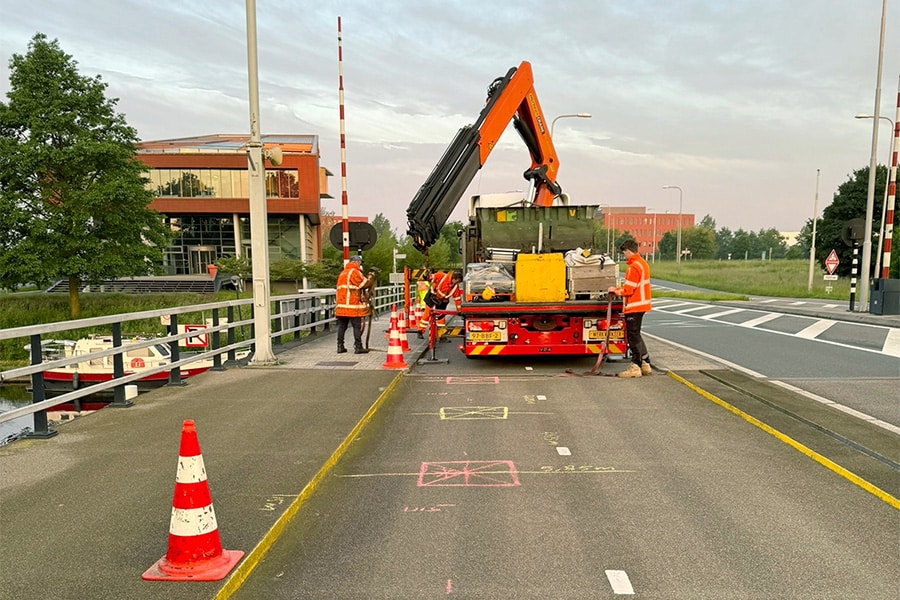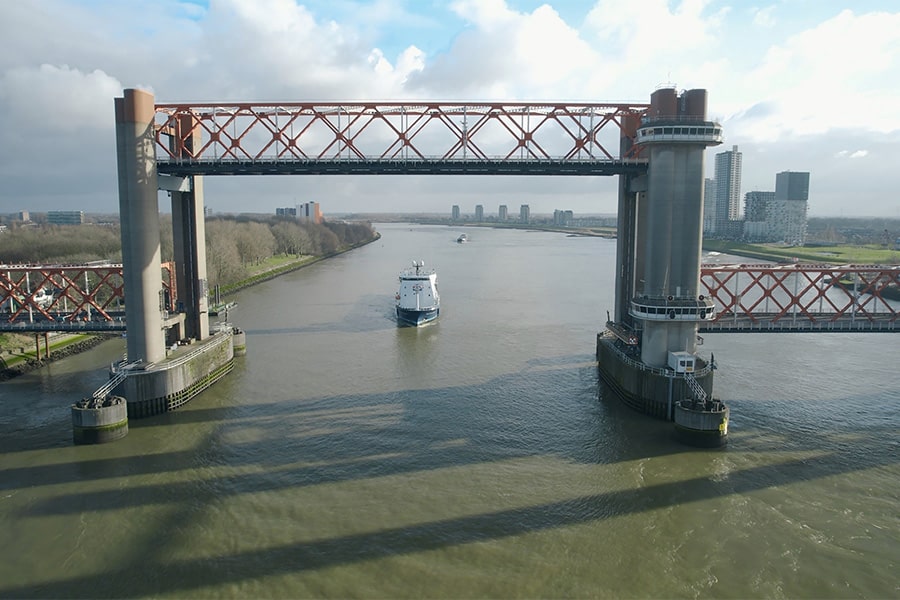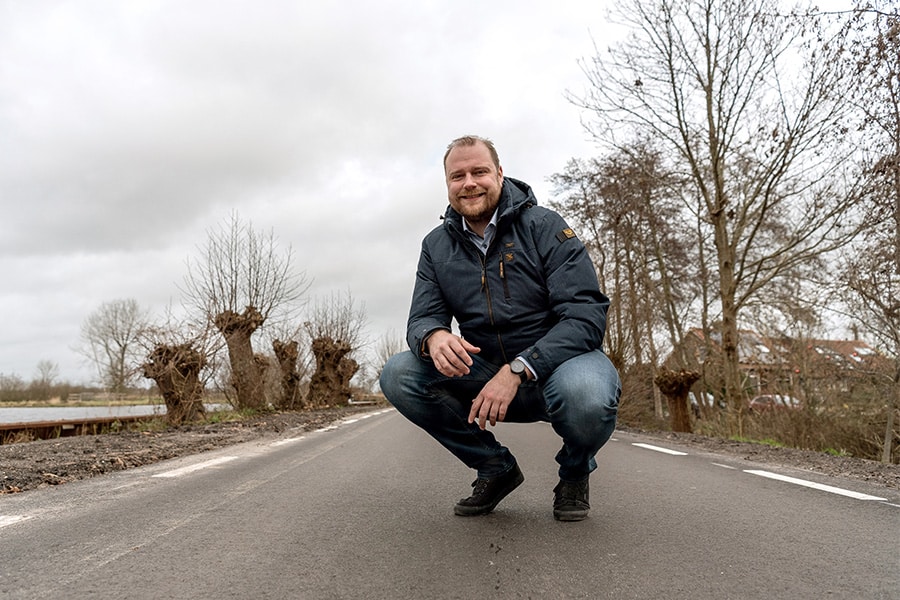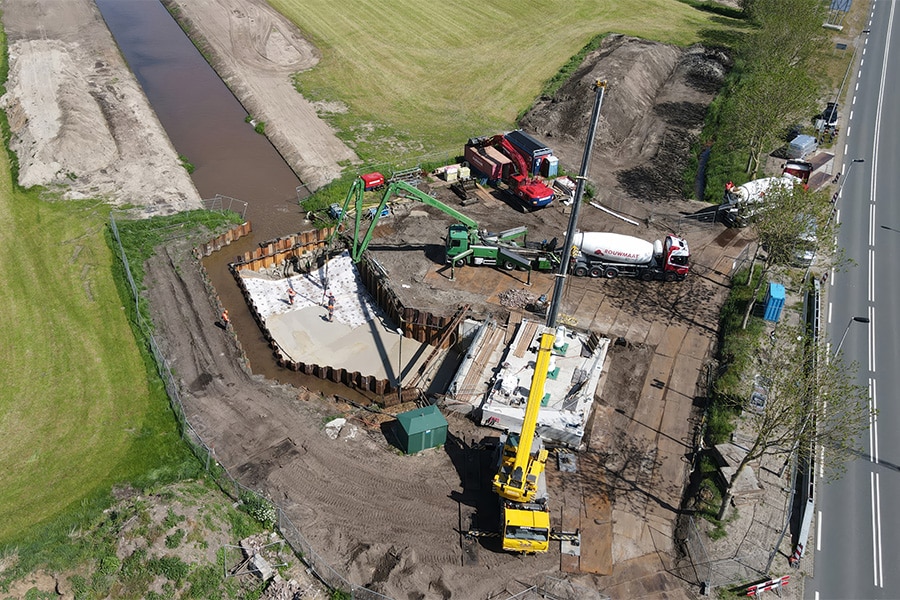
Nature Naardermeer elevators with rail project: ecoducts great success
Martens, badgers, water bats, frogs and even ring snakes know how to find the ecoducts under the railroad tracks in Naardermeer nature reserve. Two years after completion of the underpasses, hard evidence has been provided through cameras and analysis. The atypical collaboration between ProRail, Mobilis, Natuurmonumenten and the province proved to be a golden opportunity: 'Nature can successfully hitch a ride in a rail project. This can be done much more often.'

"Actually, three days after the ecoducts were completed, I already knew it was working. That's when I found the first deer tracks under the tracks," points forester Luc Hoogenstein of Natuurmonumenten to several cameras that monitor wildlife. The so-called camera traps provide hard evidence that animals hop from one end to the other, taking advantage of a much larger habitat. By now, hundreds of deer, badgers, foxes and frogs have been captured. The camera flashes on as soon as an animal passes. "In reality, the numbers are much higher, because not every passage is recorded," the forester knows from experience.
Golden opportunity
With our own eyes we are going to take a look in the special nature reserve under the smoke of Amsterdam that is freely accessible for hikers and cyclists from sunrise to sunset. Meeting point is the Stadszigt Inn, which was also the starting point during the railroad project: all construction workers, their hot and cold meals and small construction materials were transported by boats. It is a unique collaboration in which the builder, the rail operator, the province and the nature organization worked together and challenged each other. Nothing more can be seen of the work in August 2019, except the result.
"It was a golden opportunity to connect the nature reserve and we took advantage of that opportunity. This way, the ecoducts could affordably go along with the planned work. But that didn't happen overnight. These parties do not know how to find each other as a matter of course. I am still proud that it worked out. And it gives me extra satisfaction to know that it works so well," says Luuk van Hengstum of ProRail as we explore the various underpasses in the area on a drizzly Thursday morning.
Water voles, badgers and martens
Natuurmonumenten knows a lot about nature, but little about construction. For Mobilis, ProRail and the province of North Holland, the opposite is true. Still, the four parties managed to find each other to come up with suitable locations for ecoducts. "We started with 27 potential spots for underpasses from nature's point of view. Over that came the strict 'building and railroad view': Did such a structure fit at that spot under the railroad? How large could the underpass be? Did the animals, which must use the passages, occur at all at the various locations? And was it financially feasible? After much consideration, 9 locations remained," recalls rail project manager Luuk. A total of 9 passages were constructed, of which Mobilis built 2 new culverts with fauna passages and fitted 2 existing culverts with fauna passages.

They have become very different underpasses. One is under water - "also suitable for fish and water bats and even birds like water rail and moorhen" -, another is combined with a footpath and suitable for deer, foxes and badgers. And yet two other ecoducts are hollow railroad sleepers through which only small animals can fit. They are all used, it has now been demonstrated. Forester Luc is still happy with the result every day and thinks that every construction project should look for smart combinations to give nature ample room. "I used to think; 'just build such a tunnel for the animals'. But of course it's not that simple."
Tight planning
From a passing train they appear unimpressed. The grass across the street appears to be luring greener. "There are a lot of pine marten and badgers here. You actually expect those more in the woods." Every two years, Natuurmonumenten evaluates nature in the area. In addition, the province has launched a study based on the DNA of the moor frog to show that the protected species knows how to find its fellow species on the other side of the tracks.
Only nine days did Mobilis and combination partner Hegeman have time to build the fauna passages, within the entire 23-day decommissioning period to tackle the entire rail route. "The schedule was tight. We knew that colleague Dura Vermeer had to wait for us to get back on track work. We continued 24 hours a day and had prepared everything to perfection, but it remained exciting," Bart van den Heijkant, Mobilis project manager at the time, remembers well.
Floating construction shack
The construction sites were accessible only by water and rail. The special large construction crane on rails was deployed - "the Obelix" - and was on site just in time for hoisting. On his ipad are still the videos of a nighttime boat ride en route to one of the construction sites on an island in the Naardermeer. "Really pitch dark with always the risk of sandbanks. It was an adventure." An adventure he looks back on with great pleasure. Mobilis builds ecopassages more often, such as ecoduct Weerterbergen, the nature passage at Dwingelderveld, fauna passage Kootwijkerzand and eight more ecoducts over the A1 on the Veluwe and the Utrecht and Sallandse Heuvelrug. "Taking your own boat to the floating construction site. That was a highlight, though."
Almost the rare purple herons had thrown a spanner in the works of this project. Strict rules apply in the oldest nature reserve in the Netherlands. The decommissioning of the track between Naarden and Weesp had been scheduled for August 3 for two years. Such a deadline on the busy rail route cannot be pushed back. But for the track renovation there were strict requirements for breeding season and construction site. If birds were still breeding, the entire project had to be cancelled. And exactly that spring, as many as five pairs of purple herons perched to build a nest next to the track. The offspring flew out in mid-July, just in time for the rail project with its nine fauna passages. "It was meant to be," he says.



